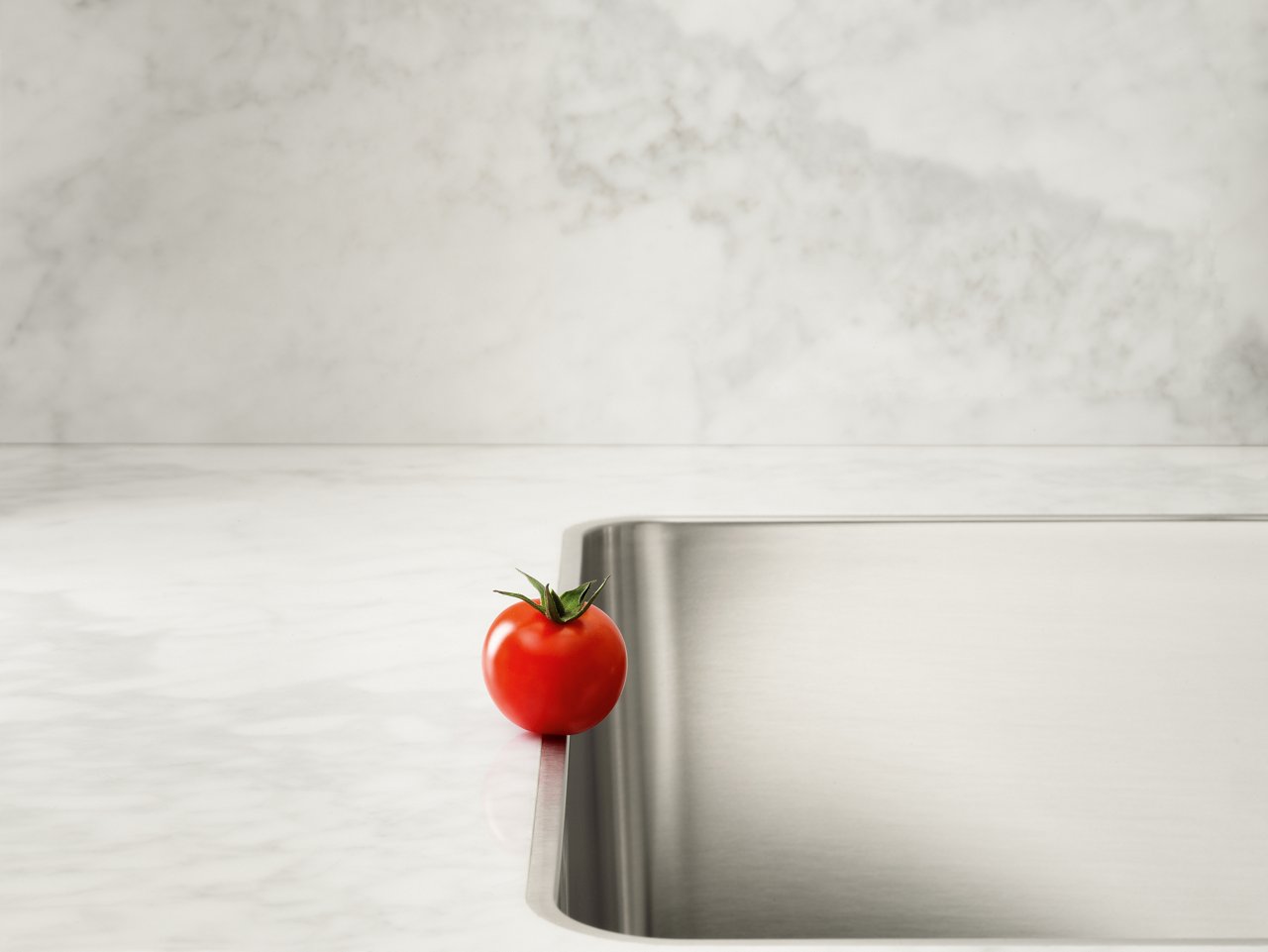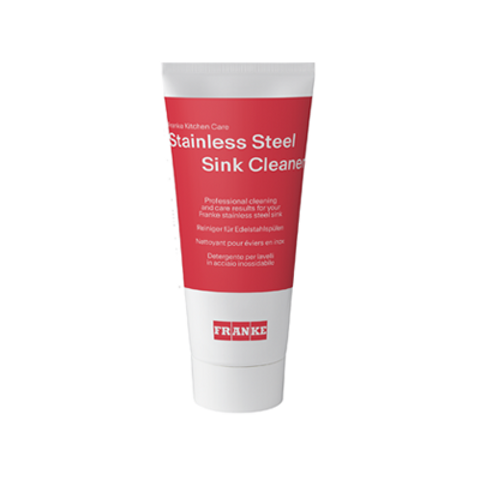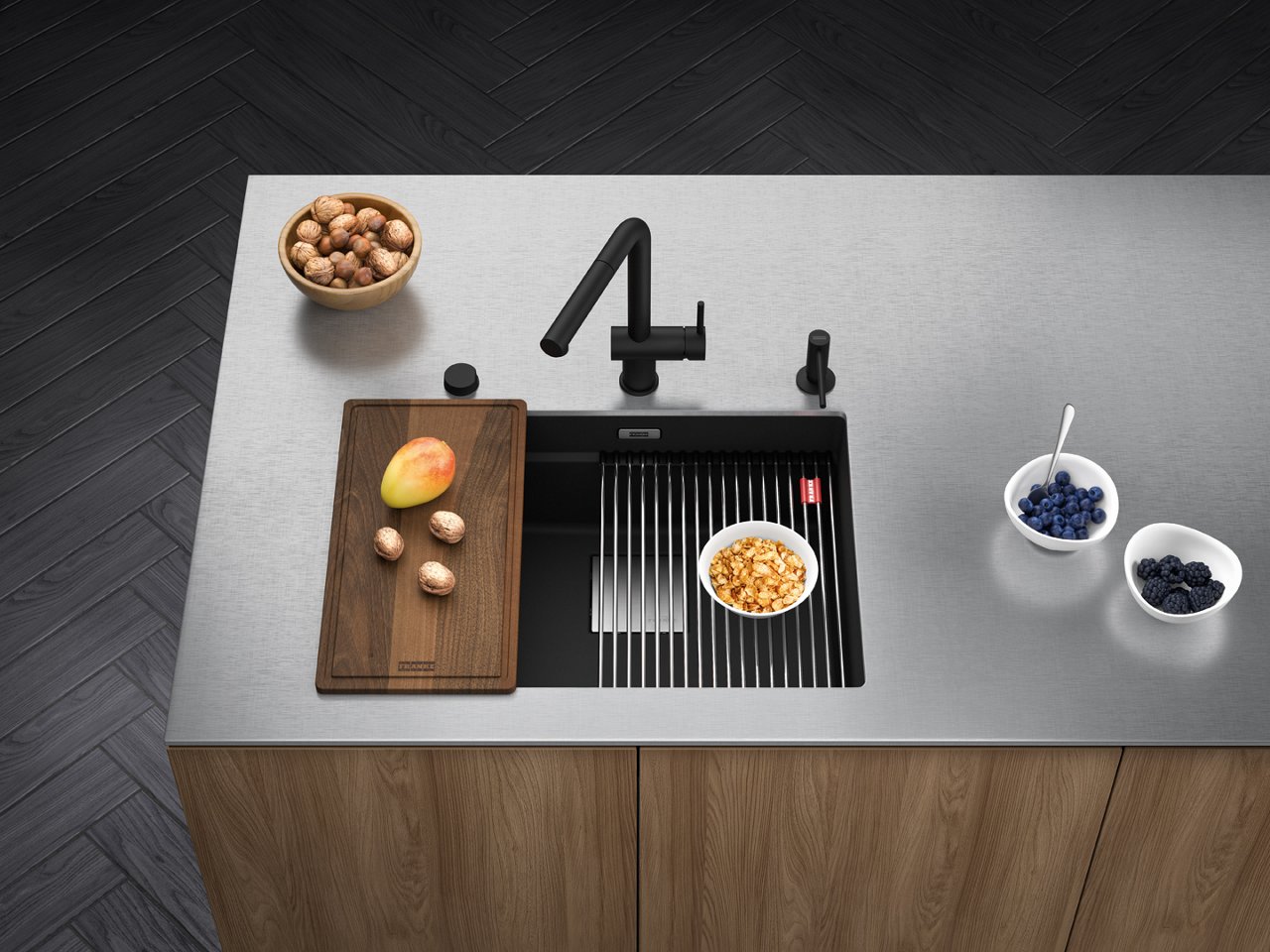CLEANING AND CARE FOR STAINLESS STEEL SINKS
Stainless steel is a durable material that can withstand even very rough handling, but hard or sharp objects can scratch this material. If you want to keep the surface of the sink free of any defects, be careful when handling similar objects. The sink is always scratched when washing dishes. Scratching the sink is a common natural consequence of use.
We recommend regular maintenance to keep your sink looking its best!
Commercial detergents often affect stainless steel. After a while, the sink becomes dull and the finish is damaged. The new Franke Kitchen Care Stainless Steel Sink Cleaner instead is acid-free and includes polishing compounds which ensure sustainable and gentle cleaning. Applied regularly with the Franke Kitchen Care Microfibre Care Cloth, it ensures your sink will always look as good as new.
Preventing discolouration and marks
3 things to avoid:
The discoloured patches you sometimes see on stainless steel are called a ‘rainbow effect’. They’re caused by water-borne deposits left clinging to the surface, never from the steel itself. To avoid watermarks and rust spots, always remove wet cleaning cloths and containers from the sink after use.
- Never use plastic bowls for washing up, as these cause heavy localised scratching.
- Avoid leaving salt, vinegar, citric fruit juices, mustard or pickles on the surface for any length of time, as they can cause corrosion.
- Please don’t use bleach, scourers, wire wool pads or abrasive cleaners on the sink.
The surface scratches that appear on stainless steel sinks are normal and nothing to worry about. They rarely go deep and will become less noticeable with age. That’s because stainless steel develops an attractive patina with time and the scratching evens out. In fact, your sink will look even better after you’ve been using it for years!
Preventing rust spots on stainless steel
Removing rust spots
Your sink is made from high quality 18/10 chrome nickel steel. That means it’s metallurgically incapable of rusting or corroding in normal household conditions. If rust and corrosion problems do occur, tiny iron particles deposited on the surface will be the culprit. These either come from the water supply or are left behind by wire scouring pads or utensils. It’s essential to clean off these filings and dry the sink thoroughly afterwards. If you let them stick around, they’ll cause rust.
If rust spots occur and remain, then the sink has not been regularly maintained as recommended. A handy ‘trick of the trade’ to remove rust is ‘Bar Keeper’s Friend’. Apply daily for 7 to 10 days, and complete each treatment with Stainless Steel Sink Cleaner.
Buy the right Cleaning Products for your Sink
Franke Homecare Pack
Tips on taking care of your Franke sink and tap.


 Instant boiling
Instant boiling







